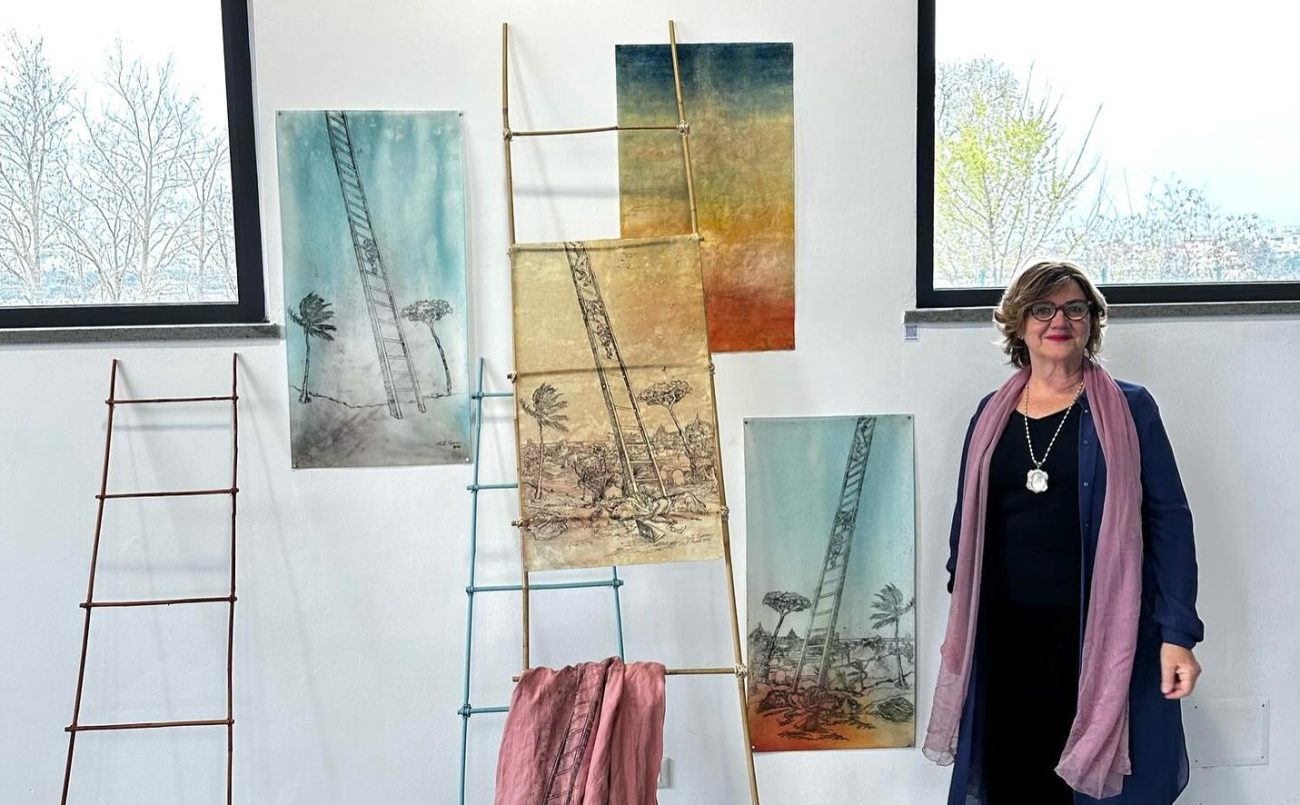God can take the trauma of a young girl escaping totalitarianism in a journey of 1,200 miles from home and use it to paint a life of artistic expression, healing, faith, and love.
Anita Guerra’s life has become a canvas upon which God used Philadelphia to paint watercolors of hope.
The Cuban refugee, who escaped the Castro regime with her family on separate trips in 1961, is returning from her home in Rome, Italy to give Philadelphia an artistic thank-you letter through her multimedia exhibition “Queridos” at Temple University.
“Queridos is the typical Spanish salutation on letters,” Guerra said. It is the first word that people will see on some of the items in Guerra’s artistic life retrospective on display from June 24 through Aug. 1 at the Atrium Entrance of the Tyler School of Art and Architecture, Norris Street between 12th and 13th Streets, on the Temple University main campus in North Philadelphia.
“I have letters from the Archdiocese of Philadelphia dating back to 1961 from Mother Mary Peters, who was in charge of handling the Cuban refugees coming in with Operation Peter Pan,” Guerra said. “People will also see some of the 200 aerograms, letters between my parents when they were separated. My mother kept them in chronological order.”
Those letters came during a year in which she, her parents and her six siblings came to Philadelphia in separate waves due to Cold War tensions between the Cuban and U.S. governments that resulted in numerous challenges.
“Word started getting around that Castro was going to remove the children from their parents, take away the authority of the parents over their children, and send the children to communist indoctrination camps,” Guerra said.
“My mother decided to accept Operation Peter Pan for four of her seven children that met the age bracket. They were sent out to Miami, but organizers got through to my mother and said, ‘We have to send them out to separate foster homes in the United States. The only other option is to send them to an orphanage up in Philadelphia.’”
The four older siblings left in January 1961 and went to St. Vincent’s Orphanage in Tacony, but she, her parents and two youngest siblings were stuck in Cuba because her architect father’s firm, Guerra y Mendoza, had become nationalized and no state employee could leave the country. Eventually, permission was granted, but on the condition that he give up all his possessions.
While her father initially stayed, her mother made the decision to take their remaining children to the United States.
“We left in August 1961,” Guerra said. Her mother tried in vain to find a job in Miami before finally heading to Philadelphia.
“We were put in the Mother Cabrini Orphanage in Overbrook,” Guerra said. “She convinced the mother superior to allow her to sleep in the infirmary at night. We were so far apart, it took more than an hour and a half by public transportation to go from one place to the other.”
She was still missing her father, but when the feast day of the beatification of St. Frances Xavier Cabrini arrived, God worked a miracle.
The sisters of the order founded by the Italian-born missionary to the United States, the Missionary Sisters of the Sacred Heart, told the Guerra family that the feast was a time to seek St. Frances Cabrini’s intercession, and “miracles would happen,” Guerra recalled.
She had just turned 6 years old, and her mother “asked me to go sit on her chair and pray that my father would be able to leave Cuba,” Guerra said. “The next day, we got a telegram” confirming he would be joining them. “I have the telegram, and it’s part of the show,” she added.
Many other artifacts of Guerra’s experience make up “Queridos,” which charts the family’s reunification in a home in Wayne. It was a journey that involved hardship but was not without beauty, love and more miracles.
“There was a food drive for the poor families in the neighborhood,” Guerra recalled. “Reluctantly, my mother gave each of her children a can of beans and a can of tomato soup to bring for the poor families. Three days later, boxes appeared on our porch. We were the poor family of the school.”
Her journey from Cuba to Philadelphia developed into a career as a visual arts professor at Temple University’s Rome campus, where up to 300 students receive education every semester.
Guerra’s pathway has also included three emotional trips back to Cuba, ones that have seen her life – as shown in the “Queridos” exhibition – come full circle.
“It’s a visual journey of this whole story from letters, drawings, paintings, embroideries, including my return home,” she said. “I was all eyes, ears, nose, senses, smells. Everything brought me back to my childhood and everything was the same. Everything was frozen in time.”
Guerra’s exhibition this summer will share those stories of the trauma of refugee life, how Philadelphia embraced her family, and how God brought them miracles along the journey.
PREVIOUS: ADROP: A Trinity of Healing the Incarcerated, Ex-Incarcerated And Loved Ones
NEXT: CRS Urges U.S. Funding to Resume for At Risk Children, Families Abroad




Share this story